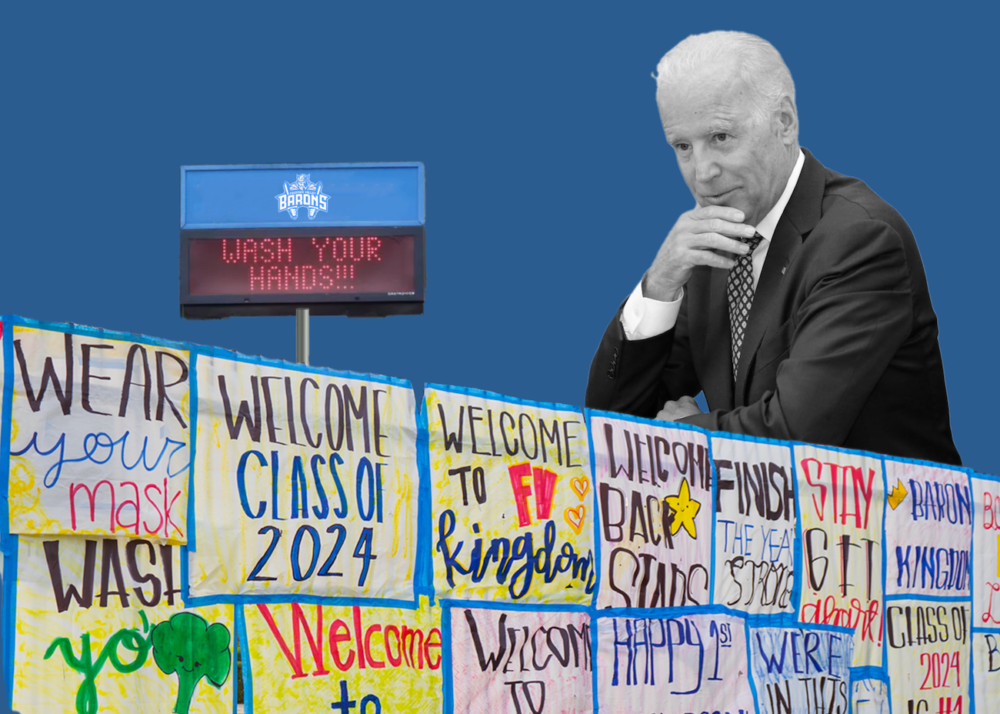
By Brandon Nguyen
President-elect Joe Biden has promised to reopen most schools, which have been moved to online or hybrid instruction because of the global coronavirus pandemic, in the first 100 days of his presidency. The announcement follows his first 100 days national mask mandate, FDA authorization of the Pfizer vaccine and hopes of Congress passing another coronavirus stimulus package.
Biden’s plan to reopen schools involves increasing funding for COVID-19 pediatric research in order to better track the effects of coronavirus on children. He also plans to push the Safer Schools Best Practices Clearinghouse Act, which will provide resources on safety and design for reopening schools.
Additionally, the Biden team says it will increase funding for child care and schools, especially Title 1 schools. Title 1 schools are schools that have at least 40% of their student population from low-income families. This funding will pay for PPE, increase sanitation measures, upgrade technology and alter classrooms so students can better socially distance.
However, President Donald Trump and other conservatives have been pushing for a full, quick reopening of schools since summer, claiming that there is very little evidence children spread coronavirus and emphasizing that the negatives of online learning, such as declining mental health and a lower quality of education, outweigh the risk of coronavirus. The Trump administration at that time faced strong backlash from Democrats, teacher unions, educators and some parents who said it was a danger to teachers’ health and would cause an increase in coronavirus cases.
The initial shipment of 2.9 million doses of the Pfizer coronavirus vaccine approved on Dec. 12 reached frontline healthcare workers through FedEx and UPS as early as Dec. 14.
Teachers and school staff, along with people in nursing homes, are second in line after high-risk healthcare workers to receive the vaccine; however, more funding is needed. State officials have asked Congress for at least $8.4 billion to continue vaccine distribution, but have received only $350 million from the CDC. Students without underlying health conditions can expect to wait months until around April, May or June of 2021.
More vaccines are expected, with the vaccine by Moderna currently under review by the FDA and Johnson and Johnson developing a vaccine soon through Trump’s Operation Warp Speed.
There are some who have said they will refuse to take the coronavirus vaccine, worrying director of the National Institute of Allergy and Infectious Disease Dr. Fauci, who has been on the forefront of the coronavirus effort. A Quinnipiac University poll found 61% of Americans are willing to take the coronavirus vaccine and a third are not.
The CDC reports children make up 22% of the US population and 8.6% of all cases, according to their data tracker.
When it comes to the transmission rate between students, data gathered throughout the world suggests schools don’t become hotspots and very young children are unlikely to pass it on compared to adults. Sixty-five thousand schools in Italy reopened in September and only 1,212 campuses had outbreaks four weeks later, despite Italy suffering more cases than most other countries per capita.
Secretary of Education Betsy DeVos said that studies show children are actually “stoppers of coronavirus,” pushing for the reopening of schools. Dr. Fauci, when asked about this claim, said more studies needed to be done in deciding whether or not children spread coronavirus enough to justify shutting down schools. According to the Washington Post, one of the studies DeVos referred to hasn’t been peer reviewed and some studies found contradicting results when children were put into large gatherings.
A Gallup poll found 29% of parents say their children are “already experiencing harm” to their emotional or mental health due to COVID-19 restrictions. The CDC recently found one in four young adults had thoughts of suicide. Less than 1% of the $175 billion of emergency funding sent to hospitals have been spent on mental health.
White House Press Secretary Kayleigh McEnany said that one in five cases of child abuse are reported by schools and there was a 62% decrease in child abuse calls to the Washington D.C. Child and Family Services Agency from mid-March to April than the year before. But hospitals have seen more severe child abuse injuries, with total cases of child abuse down overall.
However, Biden has proposed doubling the number of psychologists and mental health professionals at schools, along with increasing funds for programs directed at decreasing suicides among LGBTQ teens.
As COVID-19 cases increase across the country and California reports over 32,000 new cases everyday, officials have had to order thousands of body bags and refrigerated trucks as the death toll rises.
ICU capacity in California is a little over 2%, and some facilities in the San Joaquin Valley area have had to go into “surge” mode, where critical patients are moved into emergency or recovery rooms. California has also had to activate its “mass fatality” program, which manages aid among several government agencies because death rates cannot be handled locally.
It is expected that the upcoming Biden administration will reopen schools at a steady pace and that much of the decisions and funding will be controlled by state and local governments.
“Now, if we get the necessary funding from Congress we can get most of our schools open in 100 days but we need help from the Congress and the funding the first 100 days won’t end the COVID-19 but meeting those goals can slow the spread, save lives, and get us back to our lives with the people we love the most,” said Biden.
The effort will be aided by Biden’s pick for surgeon general Vivek Murthy, health-secretary nominee Xaveria Beccera and Jeffrey Zients, who will organize the Biden administration’s coronavirus response.





